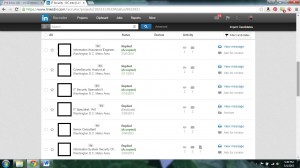4 Location Data Myths That Hold Back Your Marketing Strategy
by Ryan Kanterman , Op-Ed Contributor, September 6, 2017
While most marketers rely on “impressions” and “clicks” to measure the impact of marketing campaigns, it’s becoming clear that actual conversions, like physical store visits, work much better to gauge success.
Digital signals have a place in measuring campaign effectiveness, but savvy marketers are realizing that foot traffic delivers a new level of insight. Even as the industry moves to adopt new technologies to understand consumers’ offline response to ads, there’s confusion and misinformation about location-based measurement solutions.
Sure, digital ads raised the expectation for precise marketing campaign measurement, introducing widely understood and highly granular metrics for reach and engagement like impressions, click-through rate (CTR) and cost per click (CPC).
But today, brands that use advertising to drive people to physical locations are demanding deeper insight into how effective their advertising strategy is. To clear up confusion that may be holding brands back from the benefits of offline attribution, here are four common myths about measuring behavior in the physical world:
1. You Can’t Distinguish Between Consumers That Visited A Store And Those That Passed Nearby
Brands are right to be concerned about whether solutions can accurately place a consumer within a store. Because 60% of location data that comes from mobile devices is too broad or inaccurate for store-level precision, some marketers might forfeit getting information that delivers the most valuable kind of consumer intelligence.
Myth Debunked: With the right filters, location data companies can weed out erroneous or overly broad data while maintaining the scale needed for measurement. Marketers can now differentiate between someone inside a store, on the sidewalk, in the store next door or at a competitor’s store across the street, to get accurate actionable insights.
2. The Sample Is Too Small Or Doesn’t Represent Your Target Audience
For location companies that rely on a small panel of users, the margin of error can be large. Marketers need to consider whether measured audience is large – and representative enough – to deliver meaningful insights about their target audience.
They may also run into the problem of “selection bias” when consumers have agreed to location tracked in exchange for discounts and promotions. This audience pool probably under-represents older, wealthier consumers that aren’t interested in random discounts, and over-represent young, budget-strapped and tech-savvy consumers.
If the demographics of the consumers you target in your campaign don’t match those that provide the offline response data, you’ll end up with inaccurate metrics.
Myth Debunked: To avoid these concerns, look for location data providers that have enough scale to gather behavioral data from all the consumers served your ads (along with a control group who were not, but have the same attributes as the targeted audience). This provides a sample population that spans the entire mobile ecosystem – large enough for statistical significance and diverse enough to create precisely matched control groups.
3. Omni-Channel Measurement Is Impossible Because Media Exposure Must Be Tied To Specific Devices
Weighing the effectiveness of mobile, desktop and TV campaigns against each other is a major priority for marketers. But because most solutions handle offline response tracking differently for each channel, comparisons across publishers is impossible.
Facebook and Google had addressed the problem of tracking users across different home and mobile devices because of the ubiquity of their product, but only for ads served on their platforms. This creates some major limits on understanding how each media channel is performing.
Myth Debunked: To understand the comparative effectiveness of TV ads and any digital or mobile ads outside of Facebook or Google, marketers need to work with companies that can match device IDs to individuals and households.
Establishing the connection between consumers’ devices, households and offline identities means location measurement solutions can give an “apples-to-apples” comparison of how different media combinations influenced consumer behavior.
4. Sales Data Is More Valuable Than Location Data
Many marketers believe the only true indicator of campaign effectiveness comes from purchase data.
Myth Debunked: Using mobile location data to measure consumer behavior can reveal insights that aren’t visible with purchase data alone. For example, location data can reveal how many targeted consumers visited your store, but didn’t make a purchase. That could uncover an unseen problem with product availability, in-store promotions or even customer service.
It can also reveal if those same targeted consumers visited competitor stores, providing comprehensive benchmarks and laying the groundwork for executing and measuring conquesting campaigns.
As with any new technology, there’s bound to be some confusion and misinformation, and this is especially true for location data solutions. The confusion has created legitimate reasons why some marketers have been skeptical about adopting location-based measurement. But once you can sort out fact from fiction, it opens the door to powerful new campaign insights.
MediaPost.com: Search Marketing Daily
(61)



